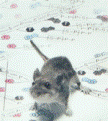Papers in the Biological Sciences

Jay F. Storz Publications
Document Type
Article
Date of this Version
March 2005
Abstract
Elucidating the genetic basis of adaptive population divergence is a goal of central importance in evolutionary biology. In principle, it should be possible to identify chromosomal regions involved in adaptive divergence by screening genome-wide patterns of DNA polymorphism to detect the locus-specific signature of positive directional selection. In the case of spatially separated populations that inhabit different environments or sympatric populations that exploit different ecological niches, it is possible to identify loci that underlie divergently selected traits by comparing relative levels of differentiation among large numbers of unlinked markers. In this review I first address the question of whether diversifying selection on polygenic traits can be expected to produce predictable patterns of allelic variation at the underlying quantitative trait loci (QTL), and whether the locus-specific effects of selection can be reliably detected against the genome-wide backdrop of stochastic variability. I then review different approaches that have been developed to identify loci involved in adaptive population divergence and I discuss the relative merits of model-based approaches that rely on assumptions about population structure vs. model-free approaches that are based on empirical distributions of summary statistics. Finally, I consider the evolutionary and functional insights that might be gained by conducting genome scans for loci involved in adaptive population divergence.


Comments
Published in Molecular Ecology 14:3 (March 2005), pp. 671–688; doi 10.1111/j.1365-294X.2005.02437.x Copyright © 2005 Blackwell Publishing Ltd. Used by permission. http://www.blackwellpublishing.com/journal.asp?ref=0962-1083&site=1